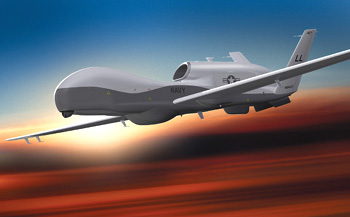INDIAN ARMED FORCES CHIEFS ON OUR RELENTLESS AND FOCUSED PUBLISHING EFFORTS

The insightful articles, inspiring narrations and analytical perspectives presented by the Editorial Team, establish an alluring connect with the reader. My compliments and best wishes to SP Guide Publications.

"Over the past 60 years, the growth of SP Guide Publications has mirrored the rising stature of Indian Navy. Its well-researched and informative magazines on Defence and Aerospace sector have served to shape an educated opinion of our military personnel, policy makers and the public alike. I wish SP's Publication team continued success, fair winds and following seas in all future endeavour!"

Since, its inception in 1964, SP Guide Publications has consistently demonstrated commitment to high-quality journalism in the aerospace and defence sectors, earning a well-deserved reputation as Asia's largest media house in this domain. I wish SP Guide Publications continued success in its pursuit of excellence.
- Indian Air Force Aims for Full Indigenous Inventory by 2047 — Air Chief Marshal A.P. Singh
- General Upendra Dwivedi takes over as the Chief of the Army Staff
- Rajnath Singh assumes charge as Defence Minister for the second consecutive term
- Admiral Dinesh K. Tripathi assumes Command of the Indian Navy as 26th Chief of the Naval Staff
- Prime Minister witnesses 'Bharat Shakti' – a Tri-Services Firing and Manoeuvre Exercise in Pokhran, Rajasthan
Global Hawk achieves two BAMS milestones

Northrop Grumman Corporation has commenced flight tests of the first developmental multifunction active sensor (MFAS) radar destined for the US Navy’s MQ-4C Broad Area Maritime Surveillance Unmanned Aircraft System (BAMS UAS). The MFAS sensor has been integrated into the company’s Gulfstream II testbed aircraft based in Palmdale, Calif.ornia, for flight testing after having completed ground station testing in late November at the company’s Electronics Systems facility.
Marking another milestone, the first BAMS aircraft has received its wings and is standing on its own gear at the company’s Palmdale Manufacturing Center in California.
“These two important milestones demonstrate continued programme maturity leading us to first flight later this year,” said Gerald A. Duke Dufresne, Sector Vice President and Unmanned Systems General Manager. “Our unmanned systems are providing the US Navy and other customers with affordable, combat-proven high altitude, long endurance intelligence, surveillance and reconnaissance solutions.”
Over the next several months, testing of the MFAS radar will be broken down into three phases: radar integration, mode integration and refinement, and data collection. Each phase tests the various capabilities and modes of the radar that will be used by the Navy to provide a persistent common picture of the maritime surface traffic.
The MFAS sensor operates with a rotating sensor that incorporates electronic scanning and provides mode agility to switch between various surveillance methods. These include maritime-surface-search (MSS) mode for tracking maritime targets and inverse-synthetic-aperture radar (ISAR) mode for classifying ships.





